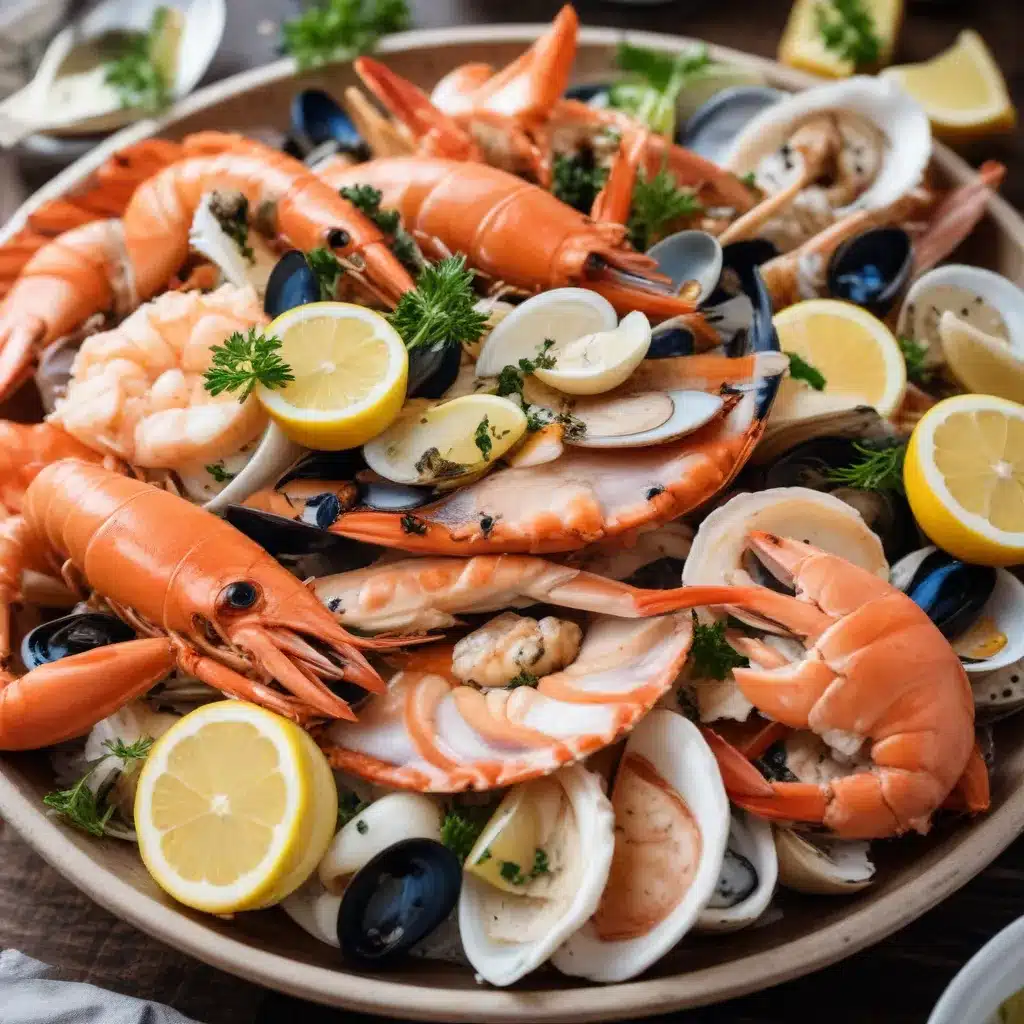
Aquatic Inhabitants
Crustacean Curiosities
Did you know that certain species of crabs can actually walk and run sideways or backwards with remarkable speed? The humble shrimp is also quite remarkable, with some possessing remarkably strong claws used for hunting or defense. These crustaceans come in a dazzling array of shapes, sizes, and colors – from the massive Alaskan king crab to the tiny, translucent glass shrimp.
Finned Fascinations
While many fish species remain resolutely earthbound, some defy gravity in astonishing ways. Flying fish, for instance, can launch themselves out of the water and glide through the air for distances up to 200 meters, flapping their pectoral fins like wings. Even more impressive are the fearsome colossal squid, the largest known invertebrates on the planet, weighing up to 500 kilograms.
Mollusk Marvels
Mollusks are a diverse group, from the common snail to the enigmatic nautilus. Some, like the blanket octopus, even have the ability to “fly” through the water, propelling themselves with their webbed tentacles. Meanwhile, the vampire squid earns its ominous moniker thanks to its dark red color and creepy, tentacled appearance. And the mimic octopus is a master of disguise, able to impersonate up to 15 different species, including sea snakes, starfish, and even shrimp.
Culinary Considerations
Preparation Prowess
When it comes to cooking seafood, a little technique can go a long way. Brining delicate fish like cod or halibut helps retain moisture during cooking, while the French en papillote method of baking in a parchment paper pouch infuses the flesh with aromatic flavors. For tougher cuts like octopus or squid, the sous vide technique of precise temperature-controlled water bathing yields remarkably tender results.
Flavor Fundamentals
Seafood’s natural flavors are often enhanced by simple seasonings. A classic mignonette sauce of shallots, vinegar, and cracked pepper is the perfect accompaniment for briny oysters. Citrus – whether in the form of lemon, lime, or orange – brightens the rich taste of salmon or tuna. And a sprinkle of sea salt or Old Bay seasoning can transform humble shrimp or crab into an indulgent delight.
Nutritional Notes
In addition to their savory deliciousness, many types of seafood are nutritional powerhouses. Cod, for example, is an excellent source of lean protein, vitamin B12, and the essential mineral selenium. Oysters contain a remarkable array of vitamins and minerals, including zinc, copper, and vitamin C. And salmon, with its abundance of heart-healthy omega-3 fatty acids, is often touted as a “superfood” of the sea.
Oceanic Origins
Geographic Diversity
The world’s oceans are teeming with a dizzying array of edible marine life. While cod is strongly associated with the cold waters of the North Atlantic, the barracuda is more at home in the tropical seas of the Caribbean. The delicate uni (or sea urchin roe) prized in Japanese cuisine hails from the rocky Pacific coastlines, while the prized Dungeness crab favored in the Pacific Northwest is distinct from its East Coast counterpart, the blue crab.
Seasonal Sensations
Seafood’s seasonality is a crucial consideration for cooks and diners alike. Oysters, for instance, are best consumed during the “R” months – September through April – when the water temperatures are lower. Lobster season varies by region, with East Coast harvests peaking in the summer and fall. Meanwhile, the appearance of the first Copper River salmon run in Alaska each spring is an eagerly anticipated culinary event.
Sustainability Strategies
As ocean ecosystems face increasing threats, a growing awareness of sustainable seafood sourcing has taken hold. Look for the Marine Stewardship Council (MSC) or Aquaculture Stewardship Council (ASC) logos when purchasing fish and shellfish, which certify responsible harvesting practices. When dining out, ask your server about the restaurant’s commitment to sustainable seafood. By making informed choices, we can all play a role in preserving the health of our vital marine resources.
Cultural Connections
Culinary Traditions
Seafood occupies a revered place in many global cuisines. In Japan, sushi and sashimi elevate the natural flavors of the ocean. The coastal regions of Spain and Portugal are famous for their paella and bacalao (salt cod) dishes. And the bouillabaisse of Marseille, France, is a legendary seafood stew featuring a harmonious blend of Mediterranean bounty.
Mythological Musings
The sea has long captured the human imagination, giving rise to countless myths and legends. The elusive kraken, a gigantic, tentacled sea monster, has terrified sailors for centuries. In Greek mythology, the sirens were beautiful, treacherous creatures who lured sailors to their doom with enchanting songs. And the mermaid, with its alluring upper body and fish-like lower half, remains a ubiquitous symbol of the ocean’s mysteries.
Artistic Inspirations
The ocean’s denizens have also provided rich inspiration for artists throughout history. The vibrant, otherworldly nudibranchs (sea slugs) have been the subject of countless nature illustrations. The nautilus, with its elegant, spiral-chambered shell, has been a favorite motif for decorative arts, from Tiffany lamps to Art Nouveau jewelry. And the mighty whale – whether the graceful humpback or the colossal blue whale – has captured the imagination of painters, sculptors, and writers alike.
Whether you’re a seasoned seafood enthusiast or a curious newcomer, this compendium of fun facts is sure to impress your dining companions and enhance your appreciation for the wonders of the sea. To learn more, be sure to visit Fish Tales Cafe – your one-stop destination for all things oceanic and delicious.

